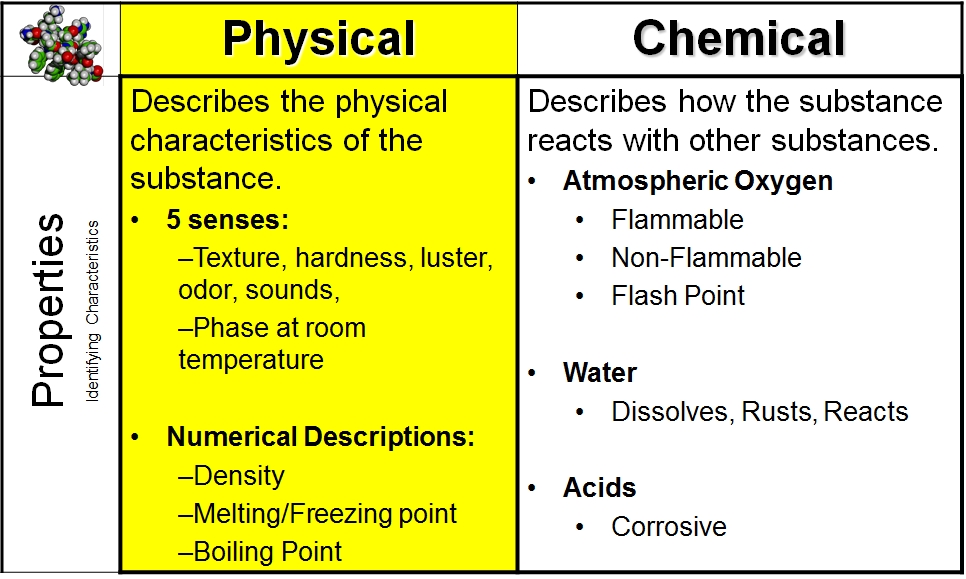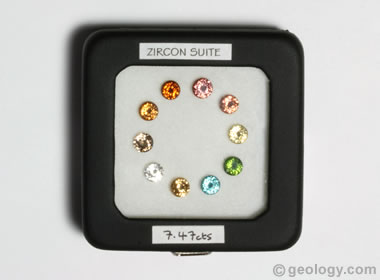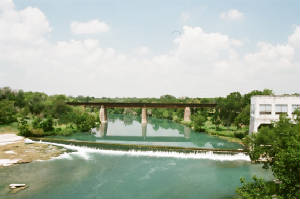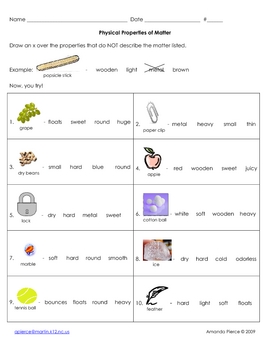Request PDF on ResearchGate On Jan 1, 2011, J H Schn and others published Physical Properties of Rocks: A Workbook Physical properties of rocks play an important role in determining its applications in various fields. Rocks are rated on the on the Moh's Hardness Scale which rates the rocks on the scale from 1 to 10. Rocks with hardness 13 are soft rocks from 36 are medium hardness rocks and 610 are hard rocks. The Properties of Rock Salt By Alice Hudson Rock salt is a form of coarsely ground sodium chloride. Sodium chloride, or salt, is employed in many industries, as well as used in cooking. It helps set dyes in fabrics and is used in the process of producing detergent and soap as well as being used as grit on roads. properties: some rocks attract a others do not; Geologists also use several other properties in studying rocks. These include the density and specific gravity, reactivity with acid and the color of the streak that the rock leaves on a piece of unglazed tile. The interpretation of geophysical data in exploration geophysics, well logging, engineering, mining and environmental geophysics requires knowledge of the. Physical Properties of Rocks: A Workbook is a symbiosis of a brief description of physical fundamentals of rock properties (based on typical experimental results and relevant theories and models) with a guide for practical use of different theoretical concepts. For this purpose a companion web site contains a selection of model based equations. Physical properties of rocks are of interest and utility in many fields of work, including geology, petrophysics, geophysics, Magnetic minerals and properties of rocks. The major rockforming minerals are the following iron oxides. Science: Geology Physical Properties of Minerals 3 Have students choose a mineral and write down the information about the eight mineral properties that were discussed as. You will need a few tools for measuring various aspects of rocks. Not all of them are required, but the more of them that are available to you, the more successful you will be in identifying specimens. Specific Gravity meter streak plate for determining streak color Magnifying glass Hardness kit. Metamorphic rocks are formed from igneous and sedimentary rocks. In volcanic and seismic activity, the cooling of magma creates igneous rocks, which are buried by. This feature is not available right now. A physical property is any property that is measurable, whose value describes a state of a physical system. The changes in the physical properties of a system can be used to describe its changes between momentary states. Physical Properties and Uses of Marble Marble occurs in large deposits that can be hundreds of feet thick and geographically extensive. This allows it to be economically mined on a large scale, with some mines and quarries producing millions of tons per year. Physical Properties of Rocks Page i Download PDF; select article Handbook of Petroleum Exploration and Production 8. Full text access Handbook of Petroleum Exploration and Production 8 Page ii Download PDF; select article Handbook of Petroleum Exploration and Production, 8. Chemical and physical properties Ion exchange. Depending on deficiency in the positive or negative charge balance (locally or overall) Pottery stones consisting of kaolinite, illite, and pyrophyllite occur as alteration products of acidic volcanic rocks, shales, and mudstone. Chapter 4 CLASSIFICATION OF ROCKS AND DESCRIPTION OF PHYSICAL PROPERTIES OF ROCK Introduction Uniformity of definitions, descriptors, and identification What is Obsidian? Obsidian is an igneous rock that forms when molten rock material cools so rapidly that atoms are unable to arrange themselves into a crystalline structure. It is an amorphous material known as a mineraloid. The result is a volcanic glass with a smooth uniform texture that breaks with a conchoidal fracture (see photo). Physical Properties of Rocks Slideshare uses cookies to improve functionality and performance, and to provide you with relevant advertising. Rock Physical Property Tests Rocks are made of one or more minerals. Minerals are pure, solid, inorganic (nonliving) materials found in Earth's crust. Minerals are made of one or more elements. Elements are the most basic, naturally occurring substances on Earth. This second set of lecture notes focuses on physical properties such as weathering potential, slaking potential, swelling potential, hardness, abrasiveness, and other properties such as porosity, density, water content, etc. Igneous rock, also known as volcanic rock, is formed by the cooling of magma or lava. This type of rock is classified by cooling time and the type of magma it is formed from. The properties of these rocks vary greatly, including their chemical composition, grain structure, texture and color. Physical Properties of Rocks Fundamentals and Principles of Petrophysics. Volume 65, Pages 2497 RocksTheir Classification and General Properties. Figure 10f3: Dipping sedimentary layers of rock, Rocky Mountains, Canada. The classification of clastic sedimentary rocks is based on the particle types found in the rock. Some types of clastic sedimentary rocks are composed of weathered rock material like gravel, sand, silt, and clay. Part 6 Elastic properties of rocks: physical basis and units elastic properties of the rockforming minerals and the fluid rock constituents the velocity of elatic waves in rocks results of experimental investigations theories. Physical Properties of Rocks HANDBOOK OF PETROLEUM EXPLORATION AND PRODUCTION 8 Series Editor JOHN CUBITT Previous volumes in the series: Volume 1 Operational Aspects of Oil and Gas Well Testing Volume 2 Statistics for Petroleum Engineers and Geoscientists Volume 3 Well Test Analysis Volume 4 A Generalized Approach to Primary Hydrocarbon Recovery of Petroleum. Physical properties are a key for combined interpretation techniques. The study of rock physics provides an interdisciplinary treatment of physical properties, wh The interpretation of geophysical data in exploration geophysics, well logging, engineering, mining and environmental geophysics requires knowledge of the physical properties of the. Summary Petrologic analyses and physical properties measurements were performed on seven granitic rock samples, taken from the sites of It is the same with rocks because each type of rock has a different combination (or recipe) of minerals. Minerals all have chemical compositions and physical properties unique to that specific mineral. Magnetic Susceptibility of Various Rocks; Seismic Velocities of Rocks and Various Materials; Seismic Velocities of Rocks and Various Materials Physical Properties. Density; Susceptibility; Seismic Velocity; Dielectric Permittivity; Electrical Conductivity. Physical properties of rocks play an important role in determining its applications in various fields. Rocks are rated on the on the Moh's Hardness Scale which rates the rocks on the scale from 1 to 10. Rocks with hardness 13 are soft rocks from 36 are medium hardness rocks and 610 are hard rocks. In this lesson, students record physical characteristics about rocks as the teacher leads a group through a virtual rock collecting activity using iPads. This lesson aligns to Essential Standard 1. 1, Summarize the physical properties of Earth materials, including rocks, minerals, soils and water that make them useful in different ways. The interpretation of geophysical data in exploration geophysics, well logging, engineering, mining and environmental geophysics requires knowledge of the physical properties of. Physical properties, strength and durability are indispensable properties that help to evaluate the rocks for various applications. These properties are mandatory in characterizing natural. The physical properties of reservoir rocks are the vital information for producers to estimate the geological reserve and ultimate recovery of an oilfield and determine the most efficient method of petroleum production. The Physical properties of minerals are used by Mineralogists to help determine the identity of a specimen. Some of the tests can be performed easily in the. Physical Properties of Rocks: A Workbook is a symbiosis of a brief description of physical fundamentals of rock properties (based on typical experimental results and relevant theories and models) with a guide for practical use of different theoretical concepts. The book is a comprehensive and concise systematic presentation of the physical properties of rocks. It is focussed on the problems of applied geophysics with respect to exploration and the expanding field of applications in engineering and mining geophysics, geotechnics, hydrology and environmental problems, and the properties under the. In order to fully understand plate tectonics and the evidence for it, it is necessary for the reader to know a little about the physical properties of rocks. Metamorphic rocks are formed by subjecting any rock typesedimentary rock, igneous rock or another older metamorphic rockto different temperature and pressure conditions than those in which the original rock was formed. This process is called metamorphism, meaning to change in form. The result is a profound change in physical properties and chemistry of the stone. The five physical properties of rocks are color, luster, shape, texture and pattern. Not all rocks have the fifth property of pattern. These properties are visible andor tactile. The color of a rock describes the hue or tone of the rock. Black, red, green or blue may be used to describe the color. As rocks get buried, the weight of the material on top increases the pressure exerted on the rock, leading to a physical change. Metasomatic metamorphism occurs when some of the elements in the rock minerals are replaced with others. GEOLOGY LABORATORY: MINERAL PROPERTIES. Learn to identify common rockforming and ore minerals on the basis of common physical properties. As this class deals with earth materials and processes, it is important that we gain knowledge of the materials that make up the Earths crust. The rocks that make up the Physical properties Index properties (density, porosity) Permeability Natural radioactivity Electrical Magnetic Spectral reectance (color) Elastic acoustic Physical Properties of Rocks, 2nd Edition, describes the physical fundamentals of rock properties, based on typical experimental results and relevant theories and models. It provides readers with all relevant rock properties and their interrelationships in one concise volume. Physical Properties of Rocks, 2nd Edition, describes the physical fundamentals of rock properties, based on typical experimental results and relevant theories and models. It provides readers with all relevant rock properties and their interrelationships in one concise volume. Minerals are identified by analyzing their physical properties. Lets learn about these properties and discover what they mean and how to determine them. Start by reading the descriptions of each of the physical properties, then dig deeper by clicking on each of the links to learn more about each property. Rocks are made out of minerals and have many different properties, or characteristics. Streak is the color of a rock after it is ground into a powder, and luster tells how shiny a rock is. Physical properties provided the main basis for classification of minerals from the Middle Ages through the mid1800s. Minerals were grouped according to characteristics such as hardness, so that diamond and corundum would be in the same class of minerals. Geology: Rocks and Minerals Overview ColourStreak Lustre Hardness Cleavage Chemical Reaction. Investigating Physical and Chemical Properties of Rocks By Jack Trentepohl Item Outside the clubhouse a seat will be made and will be placed to be sat on..











